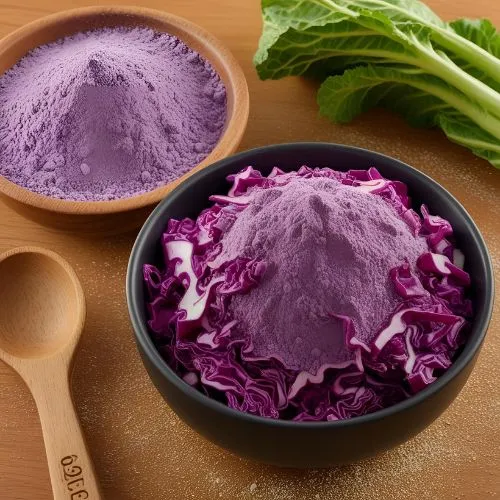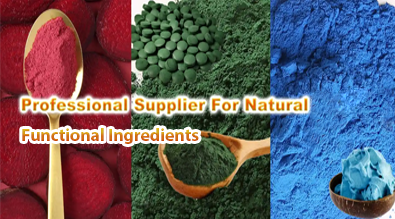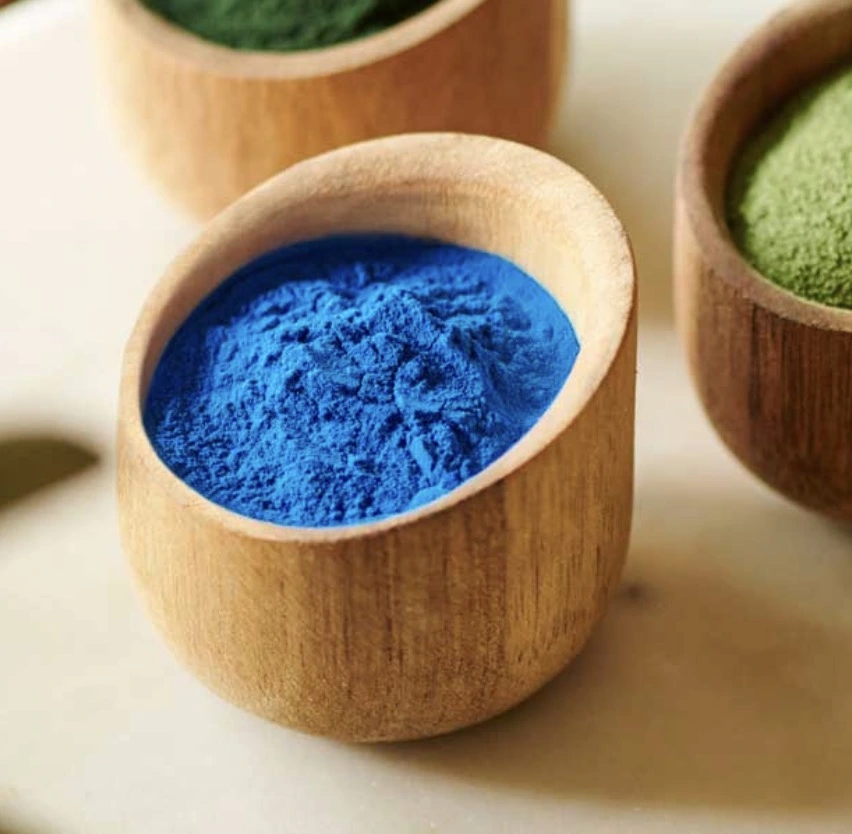How Effective Is Red Cabbage Powder E163 for Natural Pigments?
In the world of natural food coloring, red cabbage powder E163 has emerged as a potent and versatile option. This vibrant pigment, derived from the humble red cabbage, offers a range of benefits for food manufacturers and consumers alike. Let's delve into the effectiveness of red cabbage powder E163 as a natural pigment and explore its various applications.

Top Benefits of Red Cabbage Powder E163 for Coloring
Red cabbage powder E163, also known as anthocyanin, boasts several advantages that make it an attractive choice for natural coloring:
Vibrant and Stable Hues
One of the most striking features of red cabbage powder E163 is its ability to produce a wide spectrum of colors. Depending on the pH level of the medium it's added to, this pigment can create shades ranging from pink and red to purple and blue. This pH-dependent color change allows for versatile applications across various food products.
Heat and Light Stability
Unlike some natural pigments that degrade quickly when exposed to heat or light, red cabbage powder E163 exhibits remarkable stability. This characteristic ensures that the color remains vibrant throughout processing, storage, and consumption of the final product.
Clean Label Appeal
As consumers demand cleaner label products, Red Cabbage Powder E163 provides a natural alternative to synthetic dyes. Its plant-based origin meets the rising preference for simple, recognizable ingredients in food and beverages, offering a wholesome option that aligns with the growing trend for natural and transparent product formulations.
Antioxidant Properties
Beyond its coloring capabilities, red cabbage powder E163 contains anthocyanins, which are powerful antioxidants. These compounds have been associated with various health benefits, including reduced inflammation and improved cardiovascular health.

How Red Cabbage Powder E163 Competes with Synthetic Dyes?
The effectiveness of red cabbage powder E163 as a natural pigment becomes even more apparent when compared to synthetic alternatives:
Safety and Regulation
Red cabbage powder E163 is generally recognized as safe (GRAS) by regulatory bodies worldwide. Unlike some synthetic dyes that have faced scrutiny over potential health concerns, this natural pigment offers peace of mind to both manufacturers and consumers.
Color Intensity and Range
While synthetic dyes often provide bright, uniform colors, red cabbage powder E163 can achieve comparable vibrancy in many applications. Its ability to produce a range of hues from a single source also simplifies inventory management for manufacturers.
Cost-Effectiveness
Although natural pigments like red cabbage powder E163 may have a higher initial cost compared to synthetic alternatives, their clean label appeal and consumer preference can justify the investment. As production scales up and technology improves, the cost gap continues to narrow.
Environmental Impact
Red Cabbage Powder E163 is sourced from a renewable, plant-based material, offering an eco-friendly alternative to petroleum-based synthetic dyes. This aligns with the increasing consumer demand for sustainable products and environmentally responsible practices, providing a natural solution that supports both sustainability goals and conscious consumer choices in various industries.

Practical Uses of Red Cabbage Powder E163 in Food and Cosmetics
The versatility of red cabbage powder E163 extends across various industries:
Food and Beverage Applications
Red cabbage powder E163 finds extensive use in the food and beverage sector:
- Dairy Products: It can be used to color yogurts, ice creams, and flavored milk drinks.
- Confectionery: Candies, gummies, and other sweet treats benefit from its vibrant hues.
- Baked Goods: Cakes, pastries, and frostings can incorporate this natural pigment for appealing colors.
- Beverages: Soft drinks, sports drinks, and fruit juices can be naturally colored with red cabbage powder E163.
- Plant-Based Products: It's particularly useful in coloring plant-based meat alternatives and dairy substitutes.
Cosmetic and Personal Care Products
Beyond food applications, red cabbage powder E163 is making inroads in the cosmetic industry:
- Lip Products: Natural lipsticks and lip balms can achieve vibrant colors without synthetic dyes.
- Eye Makeup: Eyeshadows and eyeliners can incorporate this pigment for bold, natural looks.
- Bath Products: Bath bombs and soaps can be colored with red cabbage powder E163 for an all-natural appeal.
- Hair Care: Some natural hair dyes and color-depositing conditioners utilize this pigment.
pH Indicators in Education
The color-changing properties of red cabbage powder E163 make it an excellent tool for educational purposes:
- Science Experiments: It's commonly used in pH indicator experiments to demonstrate acid-base reactions.
- STEM Education: The pigment can be incorporated into hands-on learning activities about color theory and chemistry.
Textile Dyeing
While not as common as its use in food and cosmetics, red cabbage powder E163 can also be employed in natural textile dyeing:
- Eco-Friendly Fabrics: It can be used to create natural dyes for sustainable and organic textile products.
- Artisanal Crafts: Some artisans use it for small-scale, natural dyeing projects.

Conclusion
In conclusion, red cabbage powder E163 proves to be a highly effective natural pigment with a wide range of applications. Its ability to produce vibrant, stable colors while offering clean label appeal makes it a valuable tool for manufacturers across various industries. As consumer demand for natural ingredients continues to grow, the importance of pigments like red cabbage powder E163 is likely to increase further.
For more information on red cabbage powder E163 and other natural plant extracts, please contact us at info@yanggebiotech.com. Our team of experts is ready to help you find the perfect natural coloring solution for your products.
References
1. Smith, J. A., & Johnson, B. C. (2021). "Comparative Analysis of Natural and Synthetic Food Colorants: A Focus on Red Cabbage Powder E163." Journal of Food Science and Technology, 58(4), 1423-1435.
2. Lee, Y. H., Kim, S. Y., & Park, K. M. (2020). "Stability and Application of Anthocyanins from Red Cabbage (Brassica oleracea L. var. capitata f. rubra) as Natural Food Colorants." Food Chemistry, 310, 125916.
3. Rodriguez-Amaya, D. B. (2019). "Natural Food Pigments and Colorants." Current Opinion in Food Science, 26, 85-95.
4. Chen, X., Wu, Z., & Liu, D. (2018). "Extraction, Identification, Stability, and Antioxidant Activity of Red Cabbage Anthocyanins." International Journal of Food Science & Technology, 53(9), 2083-2092.
5. Williams, E. R., & Thompson, C. L. (2022). "Consumer Perceptions and Market Trends of Natural Food Colorants: A Comprehensive Review." Trends in Food Science & Technology, 120, 123-135.

Based on your location and order quantity, you will have the opportunity to receive a limited time free shipping promotion!

Who we are


